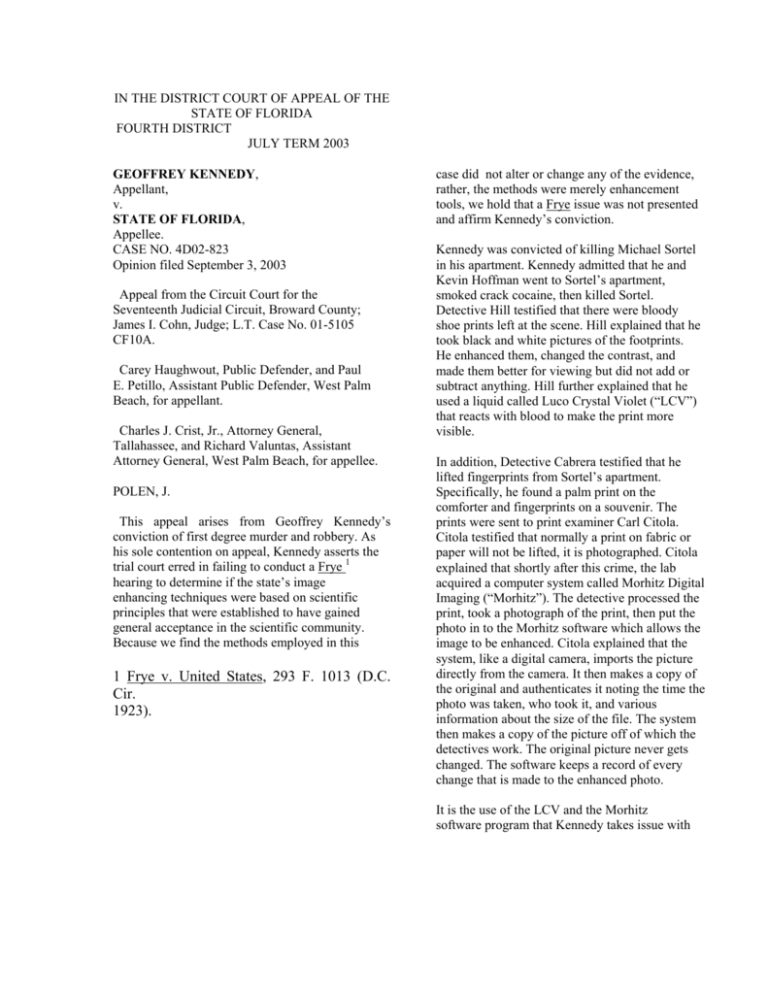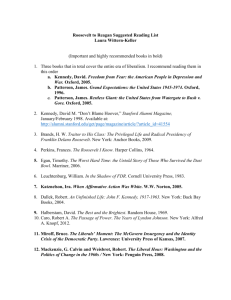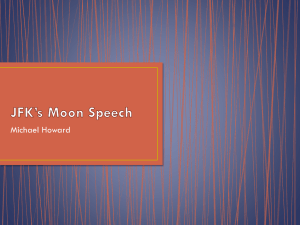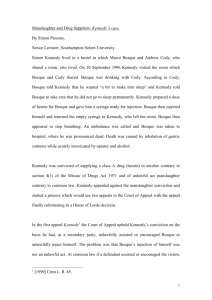1 Frye v. United States, 293 F. 1013 (D.C. Cir. 1923).
advertisement

IN THE DISTRICT COURT OF APPEAL OF THE STATE OF FLORIDA FOURTH DISTRICT JULY TERM 2003 GEOFFREY KENNEDY, Appellant, v. STATE OF FLORIDA, Appellee. CASE NO. 4D02-823 Opinion filed September 3, 2003 Appeal from the Circuit Court for the Seventeenth Judicial Circuit, Broward County; James I. Cohn, Judge; L.T. Case No. 01-5105 CF10A. Carey Haughwout, Public Defender, and Paul E. Petillo, Assistant Public Defender, West Palm Beach, for appellant. Charles J. Crist, Jr., Attorney General, Tallahassee, and Richard Valuntas, Assistant Attorney General, West Palm Beach, for appellee. POLEN, J. This appeal arises from Geoffrey Kennedy’s conviction of first degree murder and robbery. As his sole contention on appeal, Kennedy asserts the trial court erred in failing to conduct a Frye 1 hearing to determine if the state’s image enhancing techniques were based on scientific principles that were established to have gained general acceptance in the scientific community. Because we find the methods employed in this 1 Frye v. United States, 293 F. 1013 (D.C. Cir. 1923). case did not alter or change any of the evidence, rather, the methods were merely enhancement tools, we hold that a Frye issue was not presented and affirm Kennedy’s conviction. Kennedy was convicted of killing Michael Sortel in his apartment. Kennedy admitted that he and Kevin Hoffman went to Sortel’s apartment, smoked crack cocaine, then killed Sortel. Detective Hill testified that there were bloody shoe prints left at the scene. Hill explained that he took black and white pictures of the footprints. He enhanced them, changed the contrast, and made them better for viewing but did not add or subtract anything. Hill further explained that he used a liquid called Luco Crystal Violet (“LCV”) that reacts with blood to make the print more visible. In addition, Detective Cabrera testified that he lifted fingerprints from Sortel’s apartment. Specifically, he found a palm print on the comforter and fingerprints on a souvenir. The prints were sent to print examiner Carl Citola. Citola testified that normally a print on fabric or paper will not be lifted, it is photographed. Citola explained that shortly after this crime, the lab acquired a computer system called Morhitz Digital Imaging (“Morhitz”). The detective processed the print, took a photograph of the print, then put the photo in to the Morhitz software which allows the image to be enhanced. Citola explained that the system, like a digital camera, imports the picture directly from the camera. It then makes a copy of the original and authenticates it noting the time the photo was taken, who took it, and various information about the size of the file. The system then makes a copy of the picture off of which the detectives work. The original picture never gets changed. The software keeps a record of every change that is made to the enhanced photo. It is the use of the LCV and the Morhitz software program that Kennedy takes issue with in this appeal. However, as noted above, neither the LCV or the Morhitz program alter the evidence, create evidence, or change the comparison methods used to match the evidence to a suspect. As the trial court aptly noted, they are both merely enhancement tools. In rejecting an argument that handwriting comparison testimony should be subject to Frye because it was not new or novel, the Florida Supreme Court recently pointed out that “[i]n the vast majority of cases, no Frye inquiry will be required because no innovative sc ientific theories will be at issue.” Spann v. State, 28 Fla. L. Weekly S293, (Fla. Apr. 3, 2003). Certainly the enhancement of otherwise available evidence is not an innovative scientific theory. Even had we found the failure to conduct a Frye hearing error, our conclusion would not have changed, as any error in this regard would be harmless. The harmless error test places the burden on the state, as the beneficiary of the error, to prove beyond a reasonable doubt that the error complained of did not contribute to the verdict or, alternatively stated, that there is no reasonable possibility that the error contributed to the conviction.” State v. Diguilio, 491 So. 2d 1129 (Fla. 1986) (internal citations omitted). In this case, not only was Kennedy seen by Detective Curcio near the apartment where the murder occurred, Kennedy confessed to going over to the victim’s house to smoke crack and admitted that he held the victim down and that he and Hoffman both strangled the victim. As a result, we affirm Kennedy’s conviction. AFFIRMED. FARMER, C.J., and GROSS, J., concur. NOT FINAL UNTIL DISPOSITION OF ANY TIMELY FILED MOTION FOR REHEARING.






